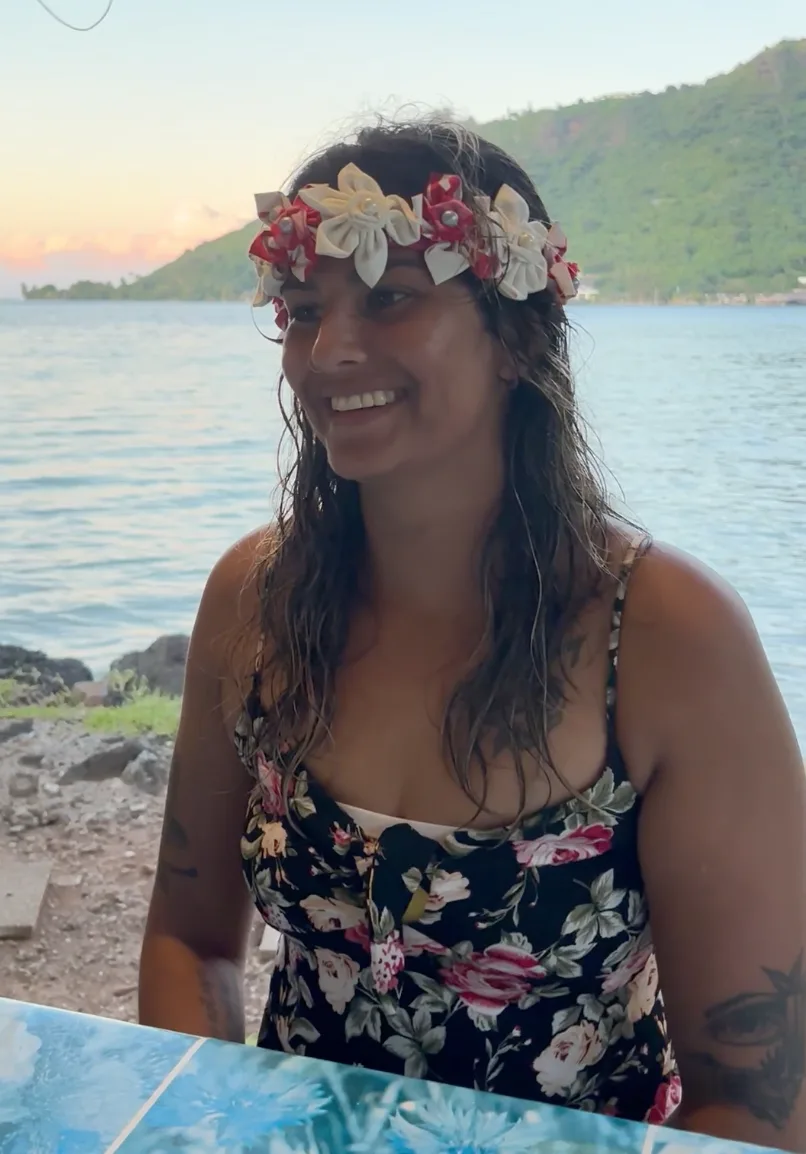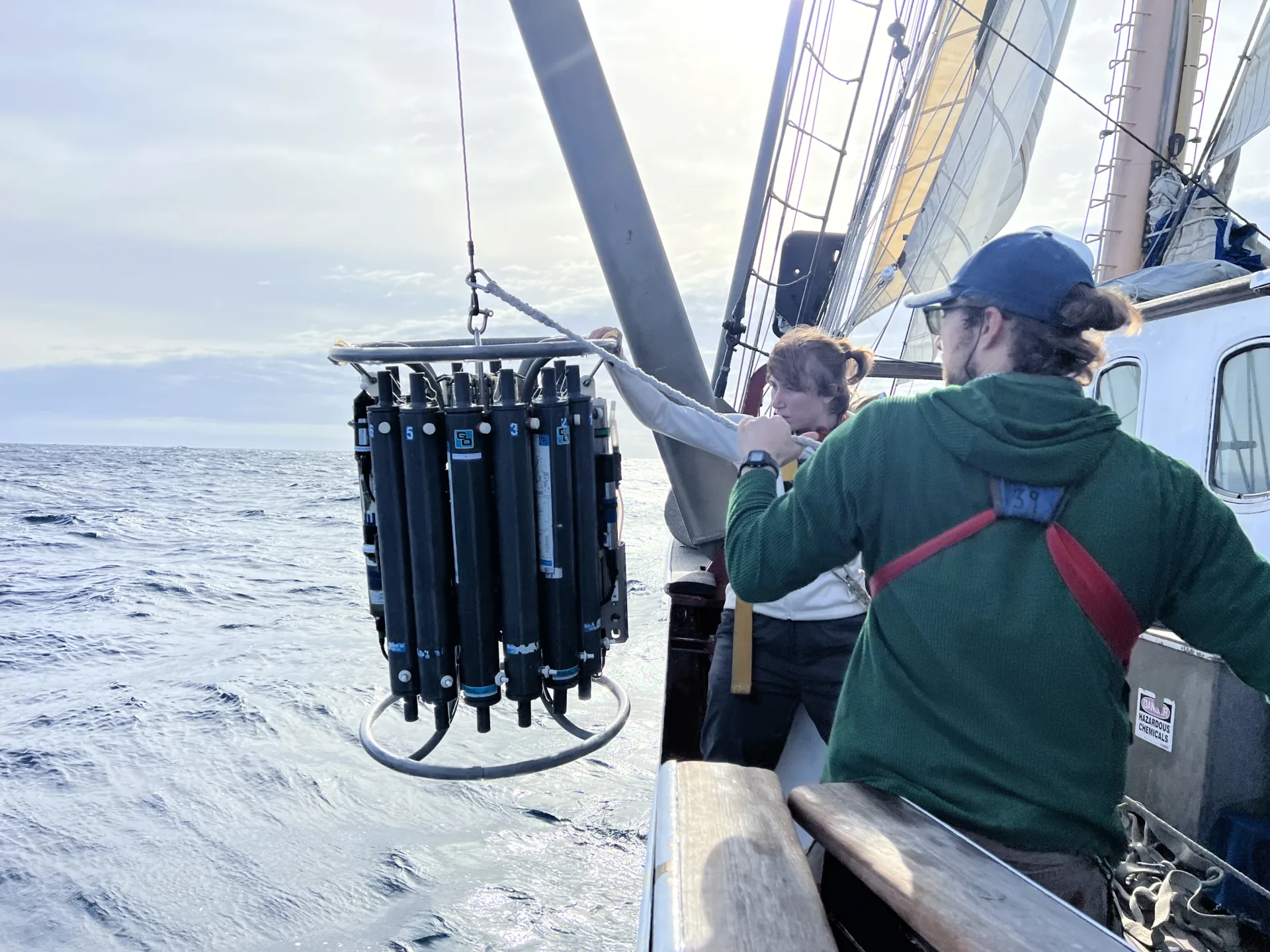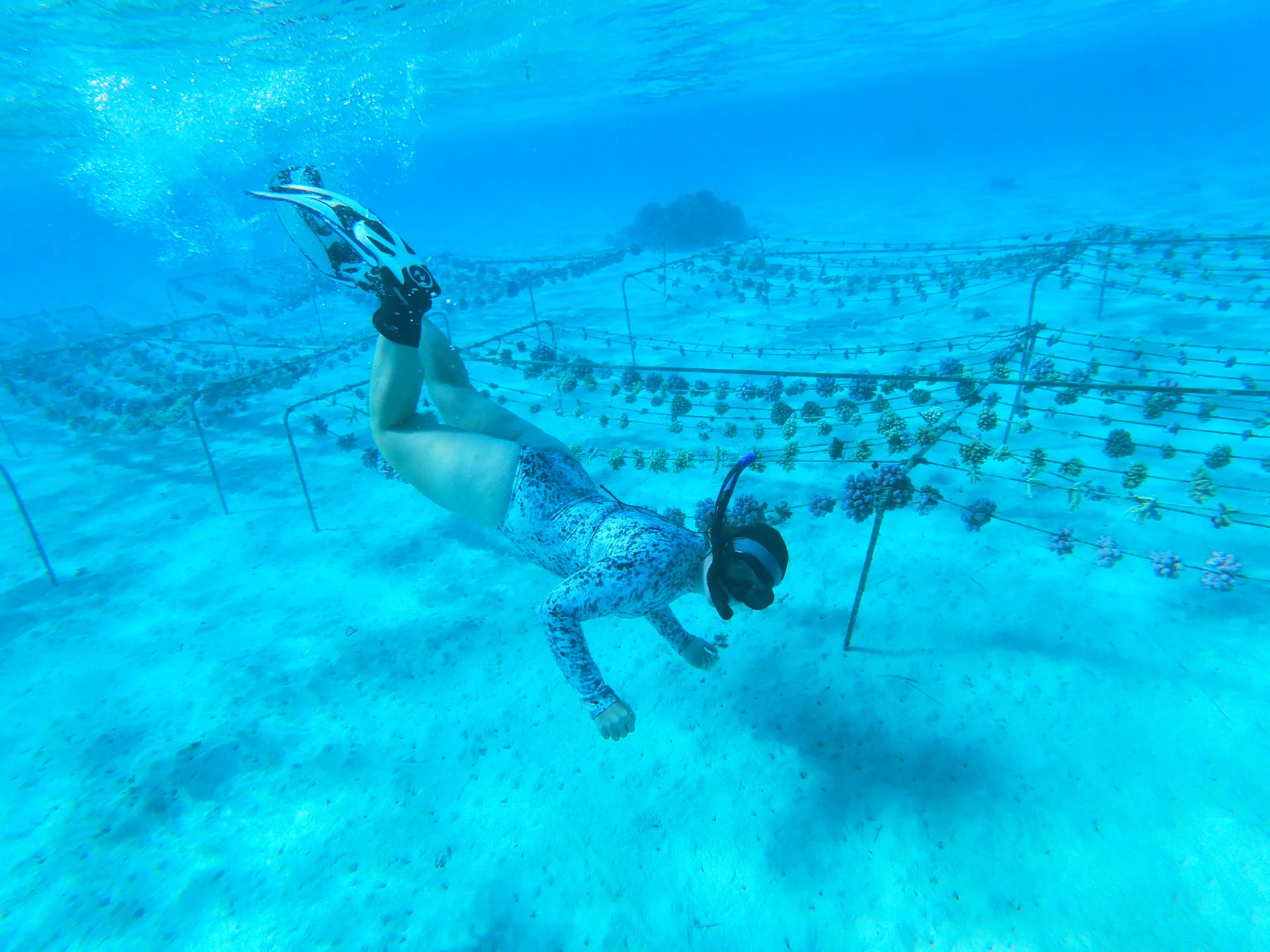Programs Blog
Britney on A New Calling to Marine Science

Date: May 23, 2025
Time: 1900
Location: Gump Marine Station, Mo‘orea
Weather: 78˚ F, 5-8 kts northeast
This is an excerpt of an interview with Britney Durward, Brock University
What did you do today with your free morning?
I went to the town of Mo ‘orea, which was great, along the one main road. We went to go get a snorkel mask that fit my face. It fits well, used it today (points to water behind her). There’s a beautiful piece of coral over there, growing on one of the pipes. Very lively. I went into a couple of the small shops, and it was great. Met a couple great shop owners who liked to talk to us. Got some pareos (cloth skirts) and a lei po’o, and then I got to go for lunch with our scientists Sarah, Kayla, and Ali. It was nice, got poke bowls at a local food truck.
This afternoon we worked as a class to revise what we started in Woods Hole, our “What We Can Do” final page for our issue of the magazine SEA Writer. Could you explain a bit more about what we did?
Our “What We Can Do” exercise was to take our knowledge of what we’ve done in Woods Hole and here in Mo ‘orea, as well as on the boat, and then see how we can bring that to the community, what we can do personally, and what we want our governments and businesses to do—to help achieve ocean health and knowledge about ocean health. We talked about organizations that we will recommend to donate to and places that would help us spread our knowledge during this trip.
It was inspiring to watch you all brainstorm, debate, then vote, trying to get the recommendations down to a one-page message. Do you have a favorite sea story?
I do, I was thinking about this, and it keeps coming back to my brain. Henry, Satya, and I had to clean the rubber mats from the galley sole (floor) on night watch, which we pulled up on deck, the first time this has been done in a while because of the rough weather. Ali told us that some people use a soapy bucket, so it doesn’t get too soapy. We drizzled a little on. We’re scrubbing away, but it’s not getting bubbly. “Ok, Satya, put some more on.” And that was the end of it. Bubbles galore! An hour and a half of us rinsing these mats, trying to get the soap out of them. Those were the cleanest galley mats that ever existed.
Has your thinking about marine science changed this semester?
Yes, my thinking about marine science has changed. I think it might be something I want to pursue instead of neuroscience. I think there is a lot of research to be done still, and I think I would be able to contribute to that in a good way. It was interesting visiting with Coral Gardeners, seeing what they do there and seeing what things we could do to try to help the ocean.


Recent Posts from the Ships
- Ocean Classroom 2024-A collaborative high school program with Proctor Academy
- Collaborations and Long-term Commitments: SEA’s Caribbean Reef Program Sets a Course for Coastal Programs that Compliment Shipboard Experiences.
- Sea Education Association students prepare for life underway using state of the art nautical simulation from Wartsila Corporation.
- SEA Writer 2022, Magazines From the Summer SEA Quest Students
- Technology@SEA: Upgrades Allow Insight into Ocean Depths
Programs
- Gap Year
- Ocean Exploration
- High School
- Science at SEA
- SEA Expedition
- SEAScape
- Pre-College
- Proctor Ocean Classroom
- Protecting the Phoenix Islands
- SPICE
- Stanford@SEA
- Undergraduate
- Climate and Society
- Climate Change and Coastal Resilience
- Coral Reef Conservation
- Marine Biodiversity and Conservation
- MBL
- Ocean Exploration: Plastics
- Ocean Policy: Marine Protected Areas
- Oceans and Climate
- Pacific Reef Expedition
- The Global Ocean: Hawai'i
- The Global Ocean: New Zealand